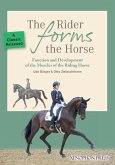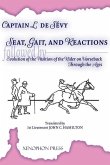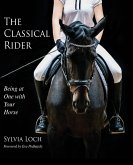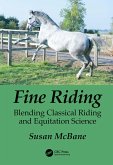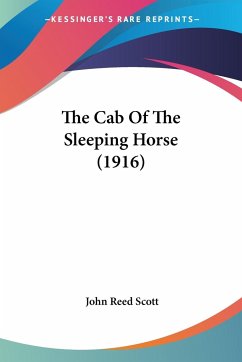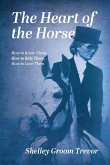- Gebundenes Buch
- Merkliste
- Auf die Merkliste
- Bewerten Bewerten
- Teilen
- Produkt teilen
- Produkterinnerung
- Produkterinnerung
In this in-depth practical book on classical riding, author and expert rider Anne Wilson demonstrates that the teachings of classical riding can engender a more ethical way of interacting with horses. A wealth of 'how-to' information, via down-to-earth language and detailed imagery, will help readers put the principles into effect.
Andere Kunden interessierten sich auch für
![The Rider Forms the Horse The Rider Forms the Horse]() Udo BurgerThe Rider Forms the Horse42,99 €
Udo BurgerThe Rider Forms the Horse42,99 €![Seat, Gaits, and Reactions and the Evolution of the Position of the Rider Through the Ages Seat, Gaits, and Reactions and the Evolution of the Position of the Rider Through the Ages]() Captain L. de SevySeat, Gaits, and Reactions and the Evolution of the Position of the Rider Through the Ages34,99 €
Captain L. de SevySeat, Gaits, and Reactions and the Evolution of the Position of the Rider Through the Ages34,99 €![The Classical Rider The Classical Rider]() Sylvia LochThe Classical Rider91,99 €
Sylvia LochThe Classical Rider91,99 €![Fine Riding Fine Riding]() Susan McbaneFine Riding126,99 €
Susan McbaneFine Riding126,99 €![The Cab Of The Sleeping Horse (1916) The Cab Of The Sleeping Horse (1916)]() John Reed ScottThe Cab Of The Sleeping Horse (1916)32,99 €
John Reed ScottThe Cab Of The Sleeping Horse (1916)32,99 €![The Art Of Taming And Educating The Horse V2 The Art Of Taming And Educating The Horse V2]() Dennis MagnerThe Art Of Taming And Educating The Horse V240,99 €
Dennis MagnerThe Art Of Taming And Educating The Horse V240,99 €![The Heart of the Horse The Heart of the Horse]() Shelley Groom TrevorThe Heart of the Horse19,99 €
Shelley Groom TrevorThe Heart of the Horse19,99 €-
-
-
In this in-depth practical book on classical riding, author and expert rider Anne Wilson demonstrates that the teachings of classical riding can engender a more ethical way of interacting with horses. A wealth of 'how-to' information, via down-to-earth language and detailed imagery, will help readers put the principles into effect.
Produktdetails
- Produktdetails
- Verlag: CRC Press
- Seitenzahl: 208
- Erscheinungstermin: 4. Februar 2025
- Englisch
- Abmessung: 240mm x 161mm x 16mm
- Gewicht: 482g
- ISBN-13: 9781032821955
- ISBN-10: 1032821957
- Artikelnr.: 71725885
- Herstellerkennzeichnung
- Libri GmbH
- Europaallee 1
- 36244 Bad Hersfeld
- gpsr@libri.de
- Verlag: CRC Press
- Seitenzahl: 208
- Erscheinungstermin: 4. Februar 2025
- Englisch
- Abmessung: 240mm x 161mm x 16mm
- Gewicht: 482g
- ISBN-13: 9781032821955
- ISBN-10: 1032821957
- Artikelnr.: 71725885
- Herstellerkennzeichnung
- Libri GmbH
- Europaallee 1
- 36244 Bad Hersfeld
- gpsr@libri.de
Anne Wilson has been involved with horses all her life and trained with Sylvia Loch. She joined the Classical Riding Club (run by Sylvia Loch) in 1995 and for many years was Regional Liaison Member on behalf of the Club. In 1998, she was awarded The CRC Gold Award Certificate. Anne began writing articles for the CRC Club magazine in 1995. Since then, she has been writing regularly for various equestrian magazines. From 2008 until 2020, she wrote articles every month in Equi-Ads magazine, which was a national publication with around 300,000 circulation. In 2004, her first book, Top Horse Training Methods Explored, was published; it became an equestrian best-seller and was pronounced 'Book of the Month' in that year by the British Horse Society. In 2009, her second book, Riding Revelations - Classical Training from the Beginning, was published. In 2008, Anne began publishing a quarterly equestrian subscription magazine, in partnership with Susan McBane and Lesley Skipper, titled Tracking-up. This is still active today, and she continues to write articles in this publication and is actively involved in its production. This magazine does not carry advertising and is run on a non-profit-making, voluntary basis, for the benefit of horses. To subscribe to Tracking-up, email Anne at annewilsondressage@hotmail.co.uk. Alongside her writing career, Anne has been teaching the art of classical riding to individual pupils since around 1995.
Introduction 1. Classical riding for everyone 2. What is going wrong today?
3. The classical seat 4. Contact with the horse's mouth 5. The halt and
half-halt 6. The walk and trot: including rising and sitting trot, walk on
a long rein, and the nodding head syndrome 7. The canter 8. Turns and
circles: including turn on the forehand, turn on the haunches (demi
pirouette) and serpentines, as well as flexion and straightness in the
school 9. Introducing lateral exercises: leg-yield, shoulder-fore and
shoulder-in 10. The travers or quarters-in 11. Half-pass12. Renvers or
haunches out 13. Rein-back: including position of the rider's lower leg for
different movements 14. Collection and the beginnings of self-carriage:
including tracking-up 15. lengthening and extension: including trotting
poles and transitions building up to extension 16. Counter-canter and
flying change 17. Intertwining the exercises: including voltes and
demi-voltes
3. The classical seat 4. Contact with the horse's mouth 5. The halt and
half-halt 6. The walk and trot: including rising and sitting trot, walk on
a long rein, and the nodding head syndrome 7. The canter 8. Turns and
circles: including turn on the forehand, turn on the haunches (demi
pirouette) and serpentines, as well as flexion and straightness in the
school 9. Introducing lateral exercises: leg-yield, shoulder-fore and
shoulder-in 10. The travers or quarters-in 11. Half-pass12. Renvers or
haunches out 13. Rein-back: including position of the rider's lower leg for
different movements 14. Collection and the beginnings of self-carriage:
including tracking-up 15. lengthening and extension: including trotting
poles and transitions building up to extension 16. Counter-canter and
flying change 17. Intertwining the exercises: including voltes and
demi-voltes
Introduction 1. Classical riding for everyone 2. What is going wrong today?
3. The classical seat 4. Contact with the horse's mouth 5. The halt and
half-halt 6. The walk and trot: including rising and sitting trot, walk on
a long rein, and the nodding head syndrome 7. The canter 8. Turns and
circles: including turn on the forehand, turn on the haunches (demi
pirouette) and serpentines, as well as flexion and straightness in the
school 9. Introducing lateral exercises: leg-yield, shoulder-fore and
shoulder-in 10. The travers or quarters-in 11. Half-pass12. Renvers or
haunches out 13. Rein-back: including position of the rider's lower leg for
different movements 14. Collection and the beginnings of self-carriage:
including tracking-up 15. lengthening and extension: including trotting
poles and transitions building up to extension 16. Counter-canter and
flying change 17. Intertwining the exercises: including voltes and
demi-voltes
3. The classical seat 4. Contact with the horse's mouth 5. The halt and
half-halt 6. The walk and trot: including rising and sitting trot, walk on
a long rein, and the nodding head syndrome 7. The canter 8. Turns and
circles: including turn on the forehand, turn on the haunches (demi
pirouette) and serpentines, as well as flexion and straightness in the
school 9. Introducing lateral exercises: leg-yield, shoulder-fore and
shoulder-in 10. The travers or quarters-in 11. Half-pass12. Renvers or
haunches out 13. Rein-back: including position of the rider's lower leg for
different movements 14. Collection and the beginnings of self-carriage:
including tracking-up 15. lengthening and extension: including trotting
poles and transitions building up to extension 16. Counter-canter and
flying change 17. Intertwining the exercises: including voltes and
demi-voltes



